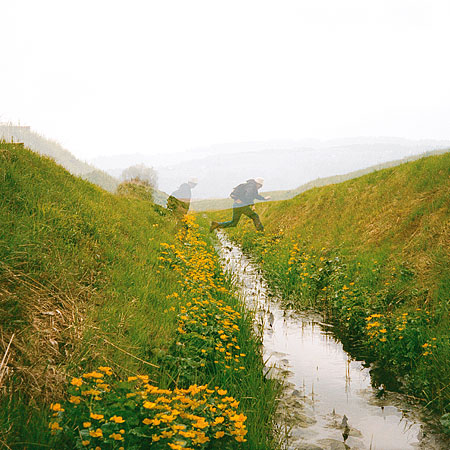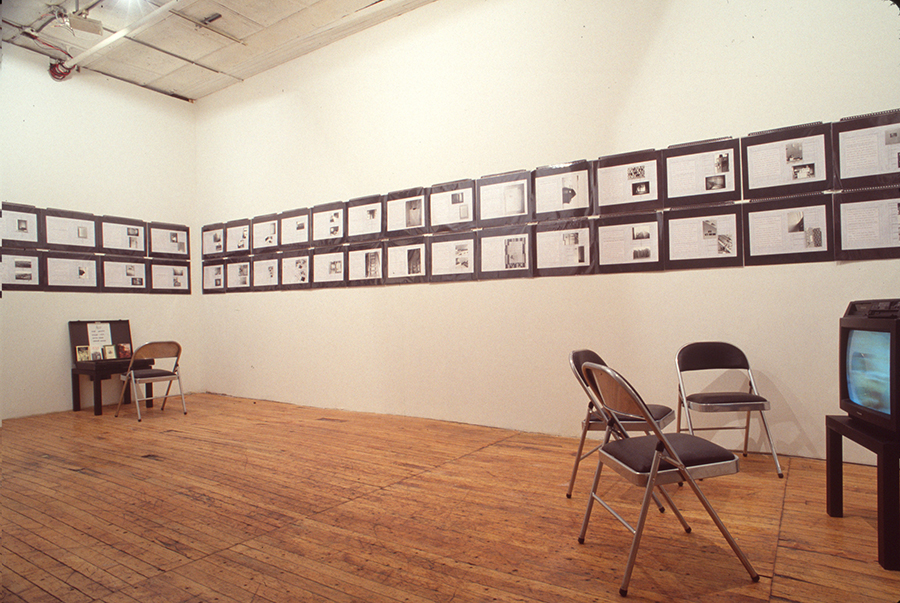James Meyer
What Happened to the Institutional Critique? Artists in the Age of Mobility
During the spring of 1993, the art dealer Colin de Land invited me to organize a show at his gallery, American Fine Arts, in New York. The title of the exhibition, What Happened to the Institutional Critique?, was inspired by a remark by the artist and AIDS activist Gregg Bordowitz. For Bordowitz, the concerns of classical institutional critique—the genre of artmaking that exposes the perceptual, material, and discursive parameters of the “art world”—had lost urgency during an epidemic that was taking the lives of many, yet had been ignored or mishandled by politicians and the public health system in the United States:
What happened to the institutional critique? The notion of art having to embody an institutional critique—this was the question that my peers and I addressed in our work…I have no more questions about gallery walls. The kind of academic understanding I used to have about institutional critique led to a dead end.
Bordowitz made this observation in 1989. By 1993, when de Land offered me a spot in his program, the museum- and gallery-focused endeavors of such trailblazers as Hans Haacke and Marcel Broodthaers known as “institutional critique” seemed of another time. Influenced by feminist, queer, postcolonial, and psychoanalytic theory; the experience of AIDS activism; and the phenomenology of mobility of a globalizing art world, artists like Bordowitz, Tom Burr, Mark Dion, Andrea Fraser, Renée Green, Zoe Leonard, and Christian Philipp Müller enlarged the concerns, compass, and siting of critical practice in ways that seemed extremely timely.

Christian Philipp Müller, Illegal Border Crossing between Austria and the Principality of Liechtenstein, 1993/2005, still
What Happened to the Institutional Critique? introduced a number of themes explored in my subsequent work. The notion of an expanded site—a reference to the impulse of 1990s artists to work inside and outside the art museum in nontraditional settings such as zoos, parks, anthropological collections, historical societies, and natural history museums—led to the premise of a functional site, a vectored notion of place that points backward and forward to other locations. In an eponymous essay, I drew a comparison between Richard Serra’s “site-specific” public commissions and Robert Smithson’s “tours” and “non-sites,” whose vectored conception of place, I argued, anticipated the practices of Burr, Dion, and Müller, troubling Serra’s place-bound phenomenology. Another essay, “Nomads: Figures of Travel in Contemporary Art,” extended the discussion of the artist-traveler in What Happened to suggest a comparison of the historicizing practices of Green and Müller with the lyrical “nomadisms” of Gabriel Orozco and Rirkrit Tiravanija. The interwoven themes of mobility and place explored in these essays informed two exhibitions that I curated at the National Gallery of Art: Los Angeles to New York: Dwan Gallery, 1959–1971 (2016–2017), also presented at the Los Angeles County Museum of Art, which historicized Dwan Gallery’s bicoastal operation in concert with the 1960s rise of jet aviation; and The Double: Identity and Difference in Art since 1900 (2022), which took up the critique of identity first advanced in What Happened, developed as a response to the “multicultural” Whitney Biennial of 1993, whose reflectionist model of identity has been widely embraced by museums in our own time.

Renée Green, Secret, installation at American Fine Arts, New York, 1993. Photo: Colin de Land, American Fine Arts, Co., and Pat Hearn Gallery Archives, MSS.008, binder 65, Center for Curatorial Studies Archives, Bard College
The 1990s art scene is a subject of considerable interest at present. Currently perceived as marking a shift into the field of “contemporary art,” this decade precedes the proliferation of international biennials and art fairs of the 2000s and 2010s, containing the seeds of a fruitful historical study of art and mobility during the age of globalization. During my Center fellowship, I conducted research for a collection of essays on the theme of the dialectic of mobility and place in late 20th-century and 21st-century art, centered on the figure of the artist-traveler. The central account describes three modes of artistic mobility—walking, driving, flying—and flows chronologically. The first section considers the walks, tours, bicycle rides, vehicular journeys, and aviation works of pop as well as the conceptual, land, and video artists of the 1960s and 1970s. The second develops and complicates the binary account of “Nomads,” focusing on 1990s practice. And the final section concerns the artist-traveler under the sign of globalization in 21st-century art, focusing on a number of figures, including artists whose work I was introduced to during my travels, sponsored by the Center and the National Gallery of Art, to biennials in Gwangju, South Korea; São Paulo, Brazil; and Sharjah, United Arab Emirates. The sabbatical afforded me an opportunity to revisit and reflect upon my own critical activity since Colin de Land’s invitation in 1993, and how the arguments I put forth then continue to animate my thinking.
National Gallery of Art, Department of Modern and Contemporary Art
Ailsa Mellon Bruce National Gallery of Art Sabbatical Fellow, 2023–2024
James Meyer is curator of modern art at the National Gallery of Art.
